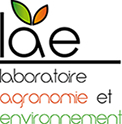The diversity of flowers and their characteristics is matched only by the diversity of the insects that visit them. A manual of simple, standardised protocols for measuring the characteristics of flowers in temperate environments has just been published in the journal Methods in Ecology and Evolution. By collecting these floral traits in a standardised way, the aim of this work is to facilitate their application in the field of community ecology in order to predict the abundance and diversity of pollinators, identify the effects of environmental change and study plant-pollinator interaction networks.
Floral traits at the heart of pollination research. Colour, smell, size and shape of flowers, quantity and quality of nectar and pollen are all characteristics that attract pollinating insects to the flowers to be visited. These floral traits are essential for understanding the interactions between plant species and pollinators, particularly for conservation purposes.
In a recent study, researchers set out to identify the different characteristics of flowers that are important for pollination. They have established standard protocols for measuring them, making it possible to standardise data acquisition methods, promote comparisons and develop research into pollination. The development of approaches based on plant traits relies on the availability of data shared by the international scientific community and stored on dedicated platforms, as well as on guides containing standardised protocols. Due to the complexity of flowers, floral traits were poorly described in these guides. The proposed protocols cover floral traits affecting all types of pollinator, with floral parts varying according to the insects concerned and the strategies of the flowers, in reference to the co-evolution that has enabled them to differentiate.
A guide to standardised protocols for floral traits
This research has led to the design of a guide to standardised protocols dedicated to floral traits, applicable to a large number of temperate plant species in order to quantify these traits at the scale of plant communities. The results obtained make it possible to describe what these species and, more broadly, plant communities provide for insects, particularly in terms of food resources, and to understand how these characteristics influence pollinators and their visits.
Simple, reproducible methods. The 24 floral traits are grouped into three categories: visual and olfactory signals used by pollinators to detect flowers, the food resources available to them and the accessibility of these resources. The researchers also propose four additional characteristics linked to flower density and flowering dynamics, which they recommend should be measured in order to extrapolate the trait values for each species to the multi-species assemblages that make up plant communities. The methods described have the advantage of being fairly simple, quick to carry out in the field and reproducible for a wide range of plant species. This guide can be used by research teams in various fields: biology, agroecology, urban ecology, pollination ecology, conservation ecology; it is aimed at both flower specialists and those who are not, but who wish to integrate this perspective into their work.
La conception de ce guide a été menée par Alice Michelot-Antalik, enseignante-chercheuse au Laboratoire Agronomie et Environnement (INRAE – Université de Lorraine) et Mathilde Baude, enseignante-chercheuse à l’Université d’Orléans et à Institut d’Ecologie et des Sciences de l’Environnement de Paris (CNRS - INRAE - IRD - Sorbonne Université / Université Paris Cité / UPEC).
Contacts :
-Alice Michelot-Antalik, Maîtresse de conférences, Laboratoire Agronomie et Environnement (UMR 1121 UL / INRAE), alice.michelot@univ-lorraine.fr
-Mathilde Baude, Maîtresse de conférence, Université d’Orléans et Institut d’Ecologie et des Sciences de l’Environnement de Paris, mathilde.baude@univ-orleans.fr
Référence : Handbook of protocols for standardized measurements of floral traits for pollinators in temperate communities. Journal: Methods in Ecology and Evolution. DOI : 10.1111/2041-210x.70031
Partenaires :
Université de Lorraine, INRAE, LAE, F-54000 Nancy, France
Université d’Orléans, Château de la Source, BP 6749, 45067 Orléans Cedex 2
Sorbonne Université, UPEC, Université Paris Cité, CNRS, IRD, INRAE, Institut d’Ecologie et des Sciences de l’Environnement (iEES-Paris), 75005 Paris, France
Faculty of Science, University of South Bohemia, Ceske Budejovice, Czech Republic
Centro de Investigaciones sobre Desertificación (CSIC-UV-GV), Valencia, Spain
INRAE, UR406 Abeilles et Environnement, Avignon, 84000, France
Anses, Laboratoire de la Santé des Végétaux, Unité Entomologie et Botanique, Montferrier-sur-Lez, France
UCLouvain, Earth and Life Institute - Agronomy, 1348 Louvain-la-Neuve, Belgium
INRAE, PSH, F-84000 Avignon, France
Evolutionary Ecology of Plants, Department of Biology, University of Marburg, 35043 Marburg, Germany
INRAE-UNICAEN UMR 950 EVA, Université de Caen, Esplanade de la Paix, 14032 CAEN Cedex
CEFE, CNRS, Univ Montpellier, EPHE, IRD, Montpellier, France
Institute of Botany, Czech Academy of Sciences, Dukelská 135, 379 82 Třeboň, Czech Republic


